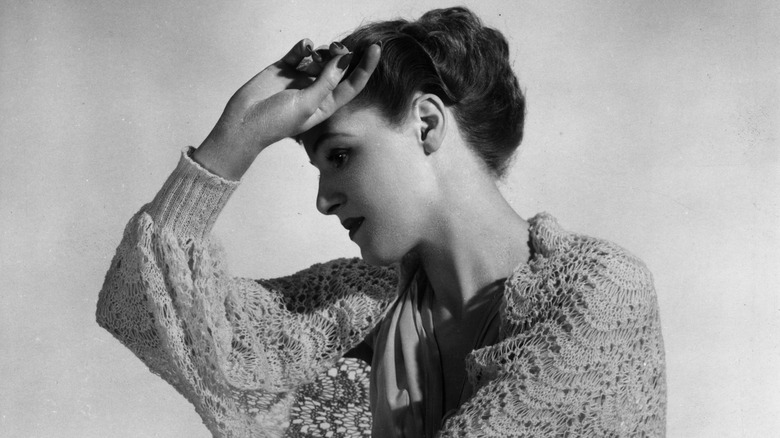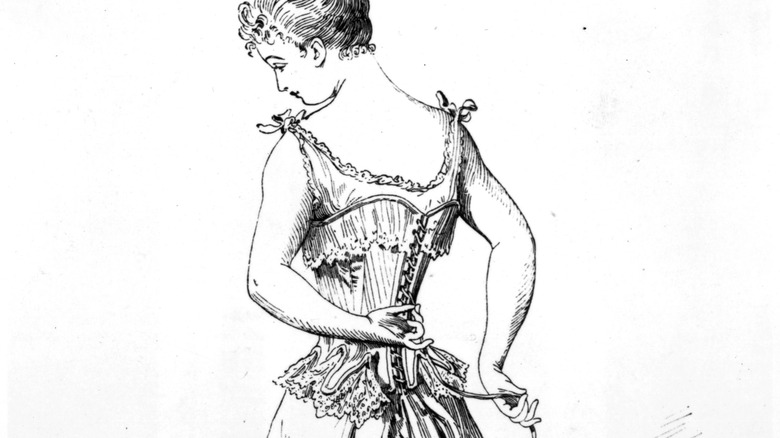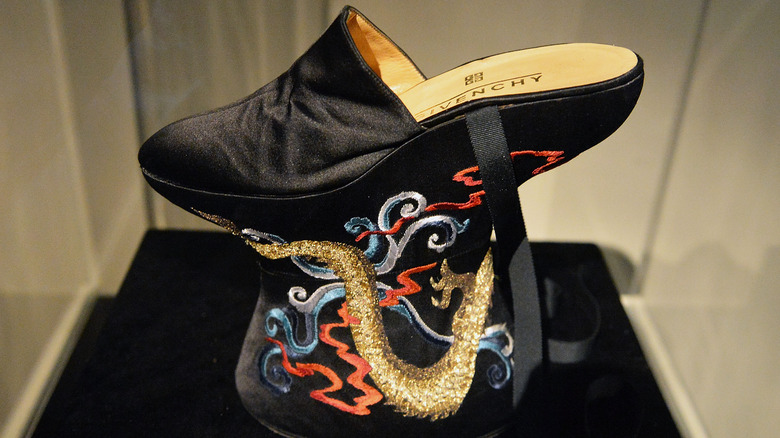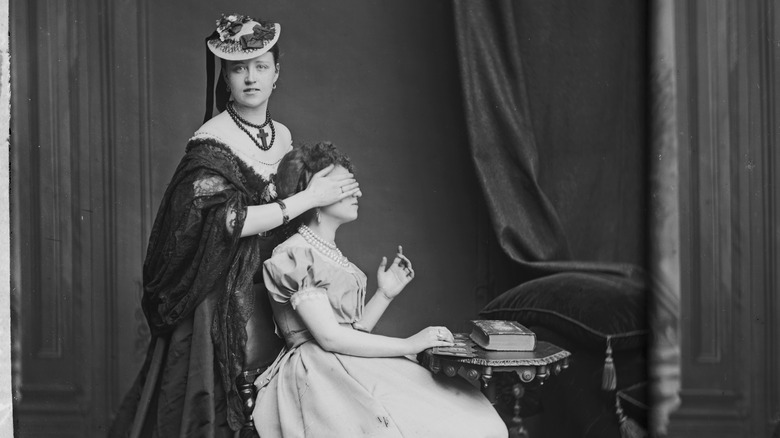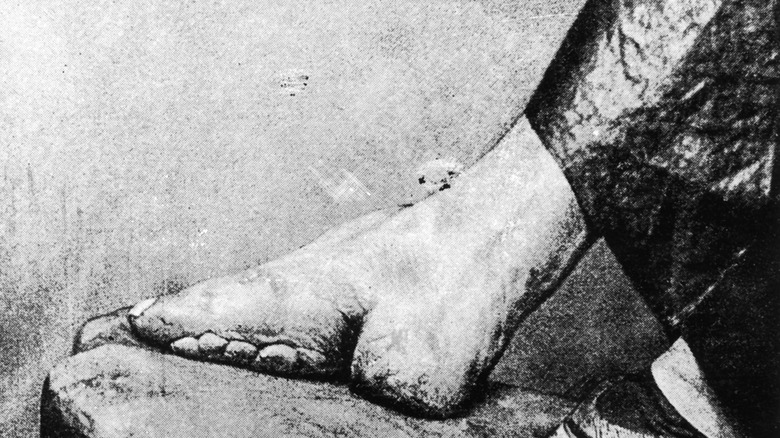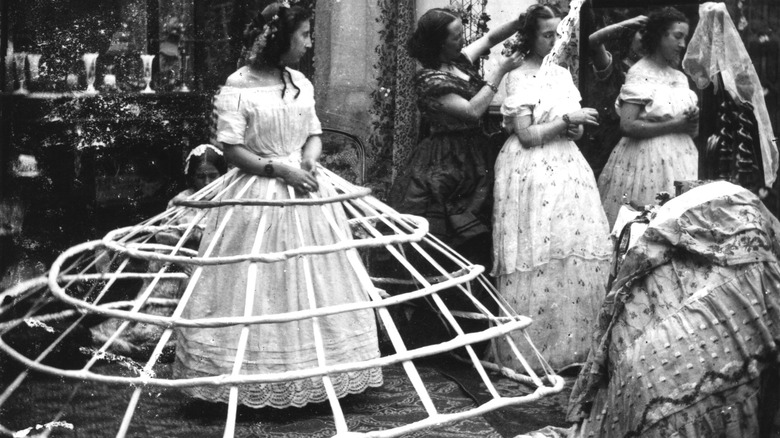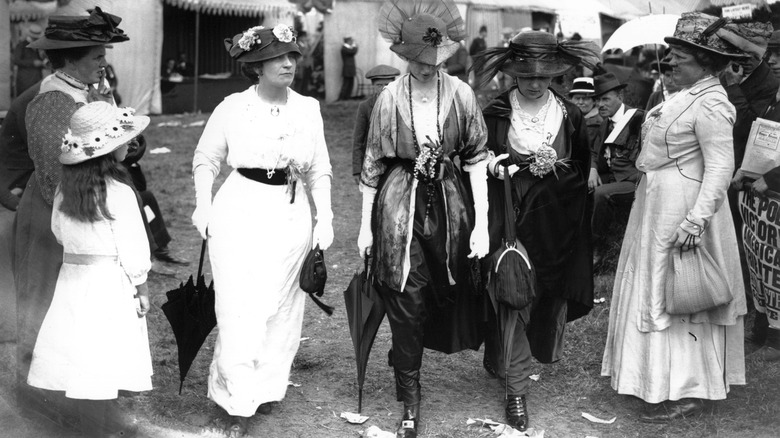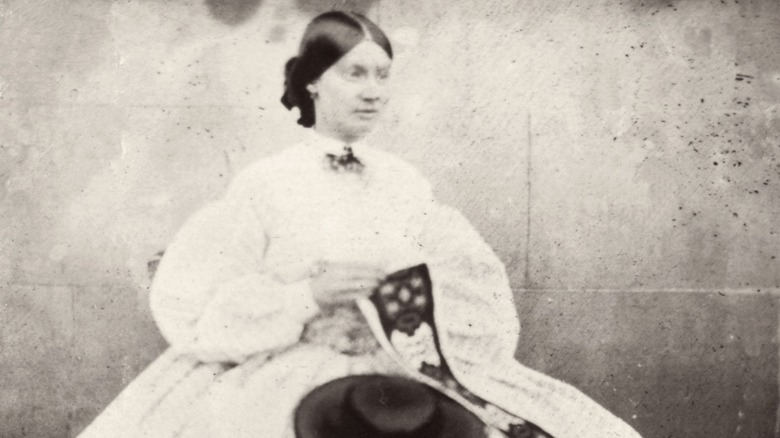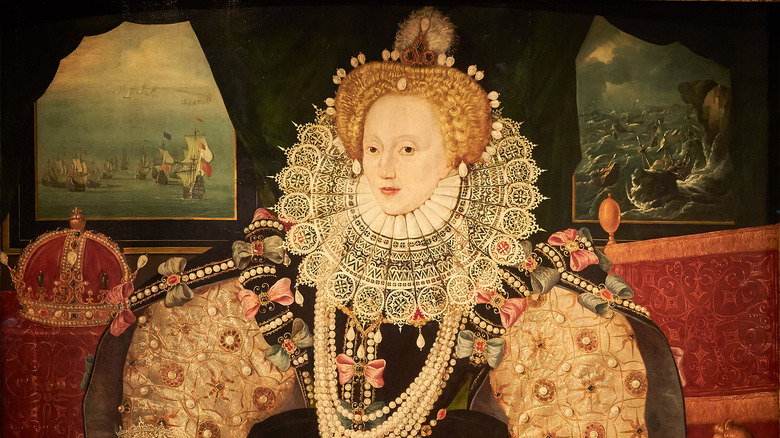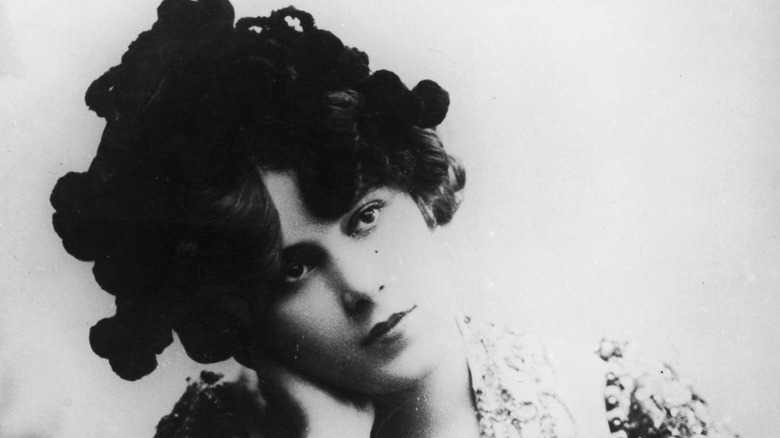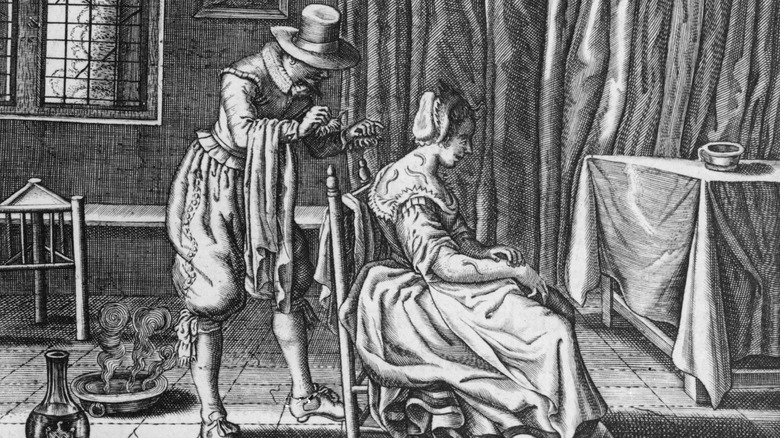The Most Oppressive Fashion Trends Throughout History
For much of history, women have lived as second-class citizens. American women were only given the right to vote in the twentieth century. As recently as the 1970s, a woman could be denied a credit card unless it had her husband's signature. The freedom we enjoy today is a fairly recent thing; our grandmothers lived in an era with fewer rights, and the generations that came before them had it even worse.
Aside from having fewer legal rights, women in the past also had fewer fashion choices. As recently as the 1940s, women could be arrested for wearing pants in public, as they were considered to be menswear. Today, women have far more options to wear clothing that is both comfortable and expresses their personal style. Historical options, however, were quite limited — and often oppressive. Some of the fashions women have been subjected to throughout history have been uncomfortable, restrictive, and downright dangerous. In some cases, historical fashion trends could even be deadly. Here are some of the most oppressive fashion trends that have existed throughout history.
Waist-cinching corsets made it difficult to breathe
Corsets are still worn today, but most of them aren't nearly as restrictive as the ones our ancestors wore. The rise of the corset as a device to cinch the waistline dates back to the 16th century. Historical corsets were notoriously uncomfortable, and constructed from confining materials such as whalebone. When laced into a tight, rigid corset, women could not raise their arms above their heads, move too quickly without running out of breath, or slouch. The corsets made women have impeccable posture by essentially locking them into a cage.
By the 19th century, doctors were warning women against lacing their corsets too tightly. The Lancet, a medical journal still in print today, published an article called Death From Tight Lacing in 1890. As the 20th century progressed, bras began to displace the corset as the undergarment of choice, but the corset hasn't really died out and still sees widespread use in the 21st century. Fortunately, it is no longer a fashion staple or considered societally mandated.
High heels were once as high as three feet tall
If you think high heels today are bad, they're nothing compared to the astonishingly high footwear worn in Europe from the 15th to the 17th century. Known as chopines, these shoes were a predecessor to the modern-day platform. While similar in structure, chopines towered over most of today's shoes, and could be as high as three feet. Naturally, women were unable to move freely in such tall shoes, so they would support themselves through the use of a walking stick or human escorts who did their best to prevent the chopine-wearers from toppling over.
The high heel dates back even further than the chopine. Originally worn by both men and women, high heels originated in the 10th century as a way to help horseback riders keep their feet in their stirrups. By the 17th century, upper and middle class men and women wore high heels as a symbol of class. By the 18th century, men had decided heels were impractical and they became primarily a women's accessory.
Eyedrops made from the lethal belladonna plant made eyes look larger
Large eyes have long been considered to be a symbol of beauty. Studies suggest that, even today, women with large eyes tend to be viewed as more attractive. While modern women can rely on colored contacts and makeup to change the appearance of their eyes, Italian women living the 16th century tried a more dangerous technique to make their eyes look larger: belladonna. The use of belladonna as a cosmetic product was also reported in 19th century France. While the plant can be lethal when ingested in large doses, the plant does have medicinal uses and is still used to help dilate pupils today.
Anyone who has ever had their eyes dilated at the eye doctor's knows just how uncomfortable the experience can be. The eye drops used to dilate your pupils can last for hours after an exam, leaving your eyes out of focus. Doing it on a regular basis all for the sake of making your eyes look larger is an extreme measure. We can only imagine how many bruises resulted from women with dilated pupils bumping into things.
Chinese women had their feet broken to make them smaller
One of the most horrifying examples of oppressive fashion comes from China during the Tang Dynasty, which lasted from 618 to 906 A.D. In the 10th century, small feet were highly prized, and the practice of foot binding in order to achieve "Golden Lotus" feet began. Girls as young as five would have their four smaller toes bent under their foot and then tightly bound. This would impede the growth of the foot, and permanently deform it. The feet would be kept bound (although the bindings would be regularly changed) for the rest of a woman's life. Losing toes to infection was not uncommon, and even women who kept all of their toes had great difficulty walking.
While the practice of foot binding was most common in the upper classes, the lower classes would sometimes adopt the process in order to improve the marriage prospects of their daughters. Foot binding continued well into the 20th century, in spite of several attempts over the centuries to ban it.
Ridiculously wide skirts led to deadly accidents
Of the many fashions that inhibited a woman's ability to walk with ease, wide skirts were some of the most dangerous. Full skirts have cycled in and out of style for centuries. They were in vogue during the Renaissance era. By the end of the 18th century, skirts were straight, but began expanding again in the first half of the 19th century. By the middle of the century, women were wearing massive hoop crinolines underneath their dresses. In Europe, this fad came to be known as Crinolinemania. Skirts could be as large as six feet in diameter, making it difficult to navigate crowded areas.
This, however, wasn't the greatest drawback of the crinoline. The voluminous skirts could also get stuck in carriage wheels, and also posed a fire hazard. Since the skirts were so large and difficult to maneuver, thousands of women managed to set their dresses aflame when walking by a fire or a lit candle.
Hobble skirts prevented women from taking large steps
Ease of movement was clearly a pretty low priority for women's fashion designers throughout history. This was particularly apparent in the 1900s, when a new trend hit the fashion scene. The decline of the crinoline resulted in narrower skirts, but this time the fashion went too far in the opposite direction. By the turn of the 20th century, women were wearing skirts so narrow that they were dubbed "hobble skirts." These hobble skirts were fitted so tightly around the lower legs that women were forced to take tiny steps, hobbling along in their stylish garments.
Women wearing these dresses not only had trouble walking and dancing, but many also found themselves in dangerous predicaments. The constricting garments led to accidents and even death, making the trend one of the most dangerous of the century. Many people in the era were confused by the popularity of the wildly impractical trend, and hobble skirts were widely mocked in the newspapers of the time.
Absurdly large gigot sleeves made it difficult for women to move their arms
Too often, clothing is designed to be aesthetically appealing without being functional. Beginning in the 1820s, women had limited use of their arms thanks to gigot sleeves, also known as leg o' mutton sleeves. While puffed sleeves can still be found in clothes today, the sleeves of the 19th century were so outrageously large that women could barely move. The sleeve would balloon at the shoulders, then taper down along the arm before ending tightly at the wrist.
These sleeves would prevent women from raising their arms above their heads. The large sleeve trend would continue throughout the Victorian era. Combined with other trends of the time including wider skirts, tighter corsets, and layers of undergarments, women in this era were so encased in fabric that the summer months must have been agonizing for them. These trends resulted in a generation of women who were barely able to move, let alone breathe. A physical manifestation of oppression if we ever heard of one.
Lead-based makeup literally poisoned people
Throughout much of history, having pale skin was all the rage. In order to keep up with the fashion, women would go to extremes to achieve a sufficiently pasty skinned look. Lead-based makeup dates back to ancient Greece and was used for several more centuries to give women the appearance of light skin. One of the most notable users of lead-based makeup was the Renaissance monarch Queen Elizabeth I, who used the dangerous cosmetic product in order to cover up facial scars that had resulted from a bout with smallpox.
Lead might have been good for the complexion, but it wasn't good for the body. The lead would be absorbed into the skin and poison wearers of the makeup, leading to hair loss, inflammation, and welts. Prolonged use of lead-based makeup sometimes actually resulted in death. The lethal cosmetics claimed a number of lives over the years.
Another method of skin lightening was swallowing arsenic
Women throughout history have found a lot of dangerous ways of lightening their skin. While Western women today have more or less abandoned the quest for light skin in favor of tanning, skin lightening is still popular in some parts of the world. In India alone, hundreds of millions of dollars are spent on skin whitening products each year. These modern skin lightening products, like the ones used throughout history, can have very dangerous side effects.
At the turn of the twentieth century, arsenic wafers were a popular beauty product. The dangers of arsenic were already well documented, and the substance was known to be lethal in large doses, but many people swore by the medicinal properties of arsenic and consumed it to reap its benefits. Even in the 21st century, arsenic-based medicines have sometimes been used, although better drugs have almost completely replaced the chemical in modern medicine.
Many women let leeches suck their blood to make their skin lighter
Perhaps part of the reason that many women today (at least in the West) prefer the tanned look is because it's much easier to make your skin darker than it is to make your skin lighter. Women have tried many methods of skin lightening over the years, but one of the creepiest has to be bloodletting. While draining blood could lead to a (temporarily) paler pallor because of, well, blood loss, it was by no means an effective way of achieving a lighter complexion.
The practice arose among the European aristocracy of the 14th century, and was accomplished by applying bloodsucking leeches to the face. Bloodletting as a medicinal practice dates back to ancient Greece, and was thought for centuries to promote health. It seems that women back then weren't horrified by the thought of having leeches applied to their skin because it was a common practice, but most modern women would be squeamish at having bloodsucking parasites unleashed on their bodies.
